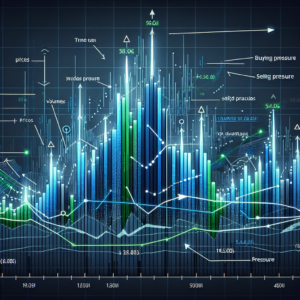
Chart Patterns Recognition Guide: Unlocking the Secrets of Technical Analysis
Introduction
Chart patterns are an essential tool in technical analysis that helps traders and investors identify potential market trends and make informed trading decisions. Understanding how to recognize and interpret these patterns can greatly enhance your ability to predict future price movements and maximize profits. In this guide, we will explore the most common chart patterns and provide you with a step-by-step approach to recognizing and utilizing them effectively.
1. The Importance of Chart Patterns
Chart patterns are formed by the price movements of a security over time, and they reflect the psychology of market participants. These patterns can provide valuable insights into the balance between supply and demand, as well as potential trend reversals or continuations. By studying chart patterns, traders can gain a deeper understanding of market dynamics and improve their trading strategies.
2. Common Chart Patterns
There are numerous chart patterns that traders use to identify potential trading opportunities. Here are some of the most widely recognized patterns:
2.1. Head and Shoulders
The head and shoulders pattern is a reversal pattern that indicates a potential trend change from bullish to bearish. It consists of three peaks, with the middle peak (the head) being higher than the other two (the shoulders). Traders often look for a break below the neckline, which confirms the pattern and suggests a further decline in price.
2.2. Double Top and Double Bottom
The double top pattern occurs when the price reaches a peak, retraces, and then fails to surpass the previous peak, forming two distinct tops. This pattern suggests a potential trend reversal from bullish to bearish. Conversely, the double bottom pattern occurs when the price reaches a low, retraces, and fails to fall below the previous low, forming two distinct bottoms. This pattern indicates a potential trend reversal from bearish to bullish.
2.3. Triangles
Triangles are consolidation patterns that occur when the price forms a series of higher lows and lower highs, converging towards a point. There are three main types of triangles: ascending, descending, and symmetrical. Ascending triangles suggest a potential bullish breakout, descending triangles indicate a potential bearish breakout, while symmetrical triangles suggest a continuation of the current trend.
3. Steps to Recognize Chart Patterns
Recognizing chart patterns requires a systematic approach. Here are the steps to effectively identify and interpret chart patterns:
3.1. Step 1: Gather Historical Data
Collect a sufficient amount of historical price data for the security you are analyzing. This data will serve as the foundation for identifying patterns and understanding their significance.
3.2. Step 2: Identify Swing Highs and Lows
Swing highs are the peaks in price that are higher than the surrounding peaks, while swing lows are the troughs in price that are lower than the surrounding troughs. Mark these swing highs and lows on your chart as they will help you identify pattern formations.
3.3. Step 3: Connect Swing Highs and Lows
Draw trendlines by connecting the swing highs and lows. These trendlines will create channels or patterns that can reveal potential chart patterns.
3.4. Step 4: Analyze Pattern Characteristics
Examine the characteristics of the chart pattern you have identified. Look for specific criteria, such as the number of peaks or troughs, symmetry, and breakout points. Understanding these characteristics will help you determine the pattern’s reliability and potential outcome.
3.5. Step 5: Confirm with Volume and Indicators
Volume and technical indicators can provide additional confirmation of chart patterns. High volume during a breakout or convergence of multiple indicators can increase the reliability of the pattern.
Conclusion
Chart patterns are powerful tools that enable traders to anticipate market movements and make well-informed trading decisions. By mastering the recognition and interpretation of these patterns, you can gain a competitive edge in the financial markets. Remember, practice and experience are key to becoming proficient in chart pattern analysis, so keep studying and refining your skills to unlock the secrets of technical analysis.





